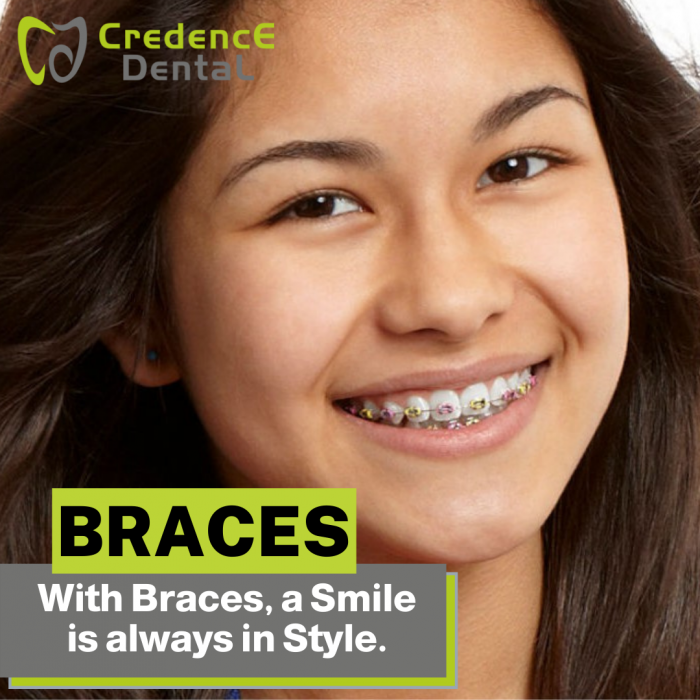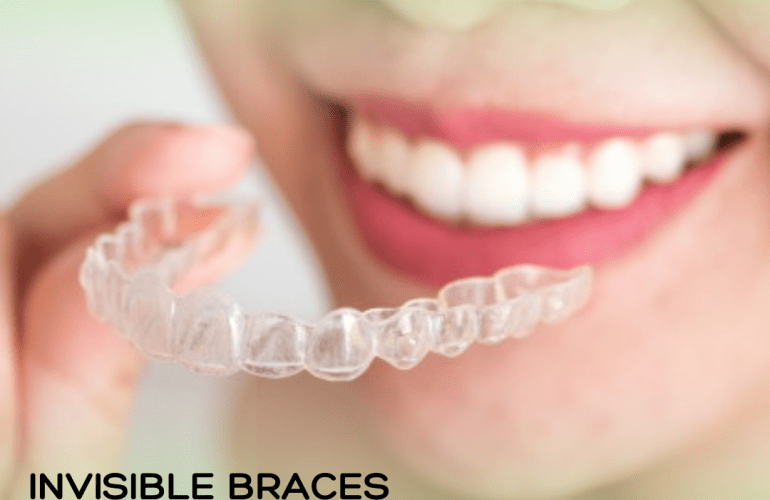After all, getting straighter teeth with the help of teeth braces isn’t exactly an experience most of us would really like to possess. Dental braces create healthy and beautiful smiles but convincing yourself to opt for it isn’t always going to be an easy or hassle-free decision to make.
A couple of decades ago, when you were to consider orthodontic braces for teeth straightening, you almost certainly imagine a mouth filled with metal brackets and teeth wires. But now, there are a lot of other options out there, depending on your orthodontic problems, needs, and your budget.
Here are the few latest type of braces for straightening teeth that are currently trending in the market which enhances the alignment of teeth.
There are mainly 5 different kinds of braces which include:
- Traditional Metal Braces
- Ceramic Braces
- Lingual Braces
- Invisible Braces
- Self-ligating Braces
Each type of braces is associated with a set of pros and cons, which must be taken into consideration before starting with the orthodontic treatment.
1. Traditional Metal Braces:
Traditional braces involve brackets and wires, usually made out of stainless steel, which is attached or bonded to the teeth, to permit desired tooth movement and their positioning can be altered as needed. This kind of braces are usually the most effective, least expensive and it is one of the foremost common types of braces used to date.
Pros of traditional braces:
- This type of braces are the most economic one compare to other types of braces for teeth
- Traditional metal braces can be used to correct all kinds of teeth alignment issues
- They are rigid and strong
Cons of traditional braces:
- They are the most noticeable sort of braces
- Metal braces and wires can break or become too long, poking the jaw, gums, or cheek tissues
- Proper oral hygiene and care are necessary and there are food and drink restrictions as well.
2. Ceramic Braces:
Ceramic braces are the most common alternative to traditional braces but the difference lies in the material used as this type of braces are made of tooth-colored ceramic. They are attached/bonded to the teeth to permit desired tooth movement and regular adjustments are necessary. They work effectively as metal braces but they are typically more expensive.
Pros of ceramic braces:
- Ceramic braces are less noticeable than traditional metal braces
- They are more aesthetic compare to metal braces
Cons of ceramic braces:
- They can easily get stained
- Prone to Frequent breakages/de-bonding as compared to metal braces
- Ceramic braces are more expensive than traditional metal braces
3. Lingual Braces:
Lingual braces have the same components as conventional braces but they are attached to the lingual or backside of the teeth instead of the front side and that’s why they are almost invisible. Lingual braces are the most uncomfortable type of braces compared to traditional braces as the tongue frequently comes in contact with the braces. Lingual braces can’t be used to treat all types of orthodontic problems, only a few simple corrections can be made.
Pros of lingual braces:
- Lingual braces are almost invisible in appearance
Cons of lingual braces:
- Lingual braces may give you a lisp and your speech may get affected as this kind of braces interfere with the movements of the tongue
- Lingual braces are more expensive than both metal braces and ceramic braces
4. Invisible Braces/Aligners:
These are the most aesthetically pleasing, transparent, plastic form of teeth straighteners or teeth braces used to straighten teeth positions. Invisible braces do not involve brackets and wires but instead, they utilize a series of custom-made clear plastic aligners that are worn over the teeth for a minimum of 22-24 hours a day.
Pros of invisible braces:
- They are more appealing in appearance and virtually invisible
- They can correct dental issues such as teeth spacing, crowded teeth, overbites, underbites, and crossbites
- They are removable.
- It’s easy to maintain oral hygiene as it’s free from fixed braces and wires
- It does not poke, scratch or irritate your gums
Cons of invisible braces:
- The aligners/ trays can become stained or damaged
- Typically, invisible aligners are more expensive than traditional braces
5. Self-Ligating Braces:
Self-ligating braces are very similar in appearance to traditional metal braces but they utilize inbuilt shutter/clip rather than elastic bands to hold the wire to the brace in place. As a result, there is less friction on the braces and it is usually easier for an individual to maintain a good oral hygiene by maintaining the braces and the teeth clean. Self-Ligating braces are available in both metal and ceramic material.
Self-ligating braces are equally effective as traditional metal braces and may increase control over the appliance, leading to more precise tooth alignment. However, they are often more expensive than conventional braces.
Pros of Self-ligating braces:
- No elastic bands, so easy to maintain dental hygiene, fewer chances of tooth decay and gum problems
- Can be used to correct all teeth alignment problems
- Rigid and strong
Cons of Self-ligating braces:
- This type of braces is quite visible and noticeable
- It’s expensive compared to another kind of braces
A Healthy and younger-looking smile is just one of the positive results the braces provide.
To know more about what type of braces you may need, visit our dentist’s team at Credence Dental for a full evaluation and a dental checkup to treat all kinds of orthodontic conditions with the help of braces.
Call us at +91-9141160212 to book an appointment with our Braces Specialist









